- Top Sousaphone Players of All Time - October 22, 2021
- Top Basson Players of All Time - August 21, 2021
- Top Clarinet Players of All Time - August 20, 2021
The saxophone is an unusual musical instrument in a couple of ways. Most modern instruments are adaptations and improvements of horns that were created in antiquity. So, while you can trace the change throughout time, the inventor of the very first instrument is unknown.
The history of the saxophone has a clear and defined history that can be traced back to its creator. We know who invented it, what the very first one looked and sounded like, the original types of saxophones, and even what the intention was in its creation. That makes it unique in the music world.
The sax is typically made from brass, like a trumpet, trombone, or tuba, but it’s classified as a woodwind because the sound is created from a vibrating reed like a clarinet or oboe. The combination of a reed and brass gives a unique sound that the player can modify to fit any type of music. Saxophones can produce a sweet sound similar to a clarinet or can be rough and seedy like a trumpet. In the hands of a good saxophonist, this instrument can do anything you want it to do.
When and how was the saxophone created?
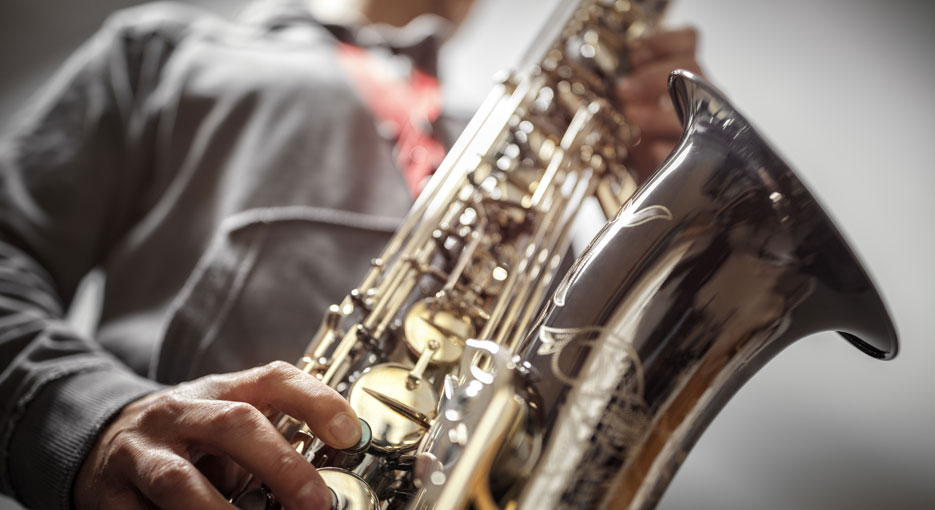
The saxophone was invented by a man named Antoine Joseph Sax. He went by the name Adolphe Sax. Adolphe was born on November 16, 1814, in the town of Dinant, Belgium. As a child, he learned the finer points of instrument making from his father, Charles Joseph Sax. Charles Sax was a well-known instrument maker. He built pianos, harps, guitars, as well as a variety of woodwind and brass instruments. Adolphe studied clarinet and flute at the Brussels Conservatory of Music and became an accomplished musician.
Adolphe worked in his father’s instrument shop and became a master craftsman. He enjoyed experimenting with new ways to make sound and played around with creating new instruments.
One explanation of the origins of the sax says Adolphe recognized a range of sounds that was missing in the compositions and performances of the time. He defined that range as an imbalance between the brass and woodwinds. He created the saxophone to correct that imbalance, and to add a new range to performance music.
The second explanation claims that Adolphe was trying to improve the sound of the bass clarinet when he created the sax. Like most old stories, the truth probably lies somewhere in between and we will never know Adolphe’s true motivations.
It’s said that Adolphe experimented by changing the size and shape of brass instruments and putting a clarinet mouthpiece on them. While this seems like a reasonable explanation of how the sax was invented, nobody knows for certain what Adolphe’s creative process was.
When was the saxophone first introduced as an instrument?
In 1841, Adolphe introduced the saxophone to the world. The first known person to see the saxophone was composer Hector Berlioz. Adolphe and Hector were friends and knew each other well through their musical accomplishments. The version of the sax Berlioz was introduced to was a C bass saxophone. It was one of several types and ranges of the instrument created by Adolphe.
Berlioz loved the saxophone. It was different from any other instrument at the time, and it was a horn that could be played in any setting. In 1842 Berlioz published an article about the sax in a French magazine called, “Journal des Debats.” The article was well-received, musicians became curious about the saxophone.
In 1844 Adolphe presented his invention at the Paris Industrial Exhibition. This was the first time the general public was introduced to the saxophone.
Hector Berlioz conducted the first composed piece featuring the saxophone on Feb 3, 1844. It was a chorus piece written by Berlioz titled Chant Sacre.
In December of 1844, Georges Kastner conducted an orchestral debut of the sax. It was featured at the Paris Conservatory in an opera called “Last King of Juda.”
The French military band started using Eb and Bb versions of the sax in 1845.
On February 14, 1847, Adolphe formed the “Gymnase Musical” in Paris, France. This was a saxophone school that focused on teaching the instrument to musicians in military bands.
When was the first saxophone patented?
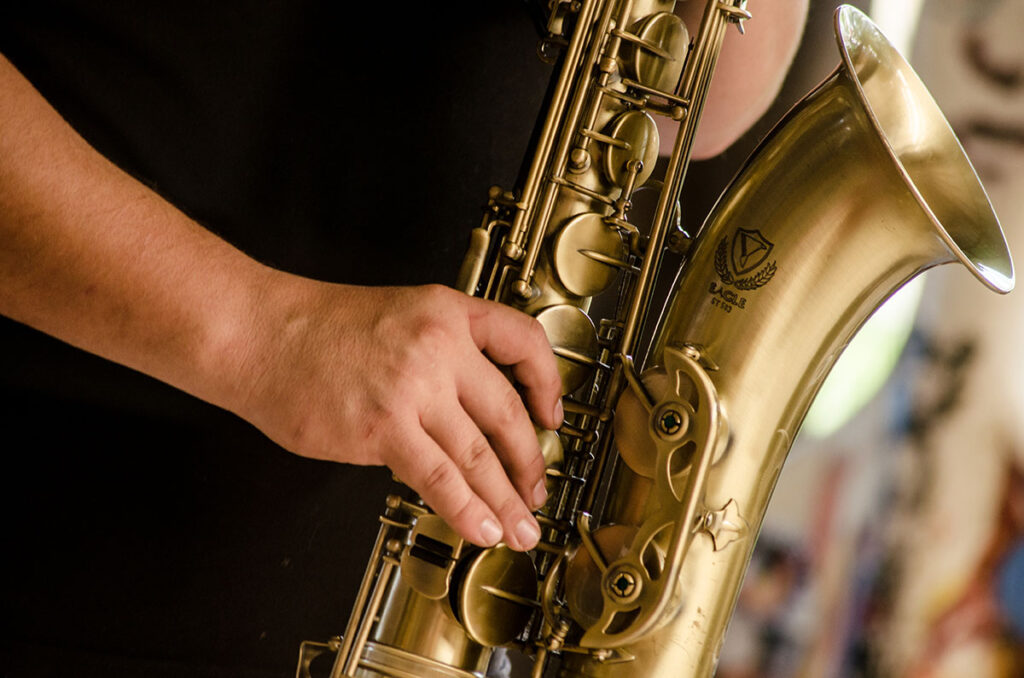
Adolphe filed for the first patent of the saxophone in 1845. The patent was granted in 1846
Original types of saxophone
The original saxophone consisted of a family of 14 instruments. They were all different in size, pitch, and key. Some played in the higher ranges, like the modern soprano sax, and others were low bass instruments, similar to today’s baritone sax. The instruments listed on the patent include
- Eb sopranino
- Bb soprano
- C soprano
- Eb alto
- F alto
- Bb tenor
- C tenor
- Eb baritone
- Bb bass
- C bass
- Eb contrabass
- F contrabass
Some of these instruments are still used today. But, most have faded in popularity. The modern saxophone family includes the following saxes.
- Soprillo
- Sopranino
- Soprano
- Alto
- Tenor
- Baritone
- Contrabass
- Bass
Of these, only the soprano, alto, tenor, and baritone are widely used.
How has the saxophone changed over the years?
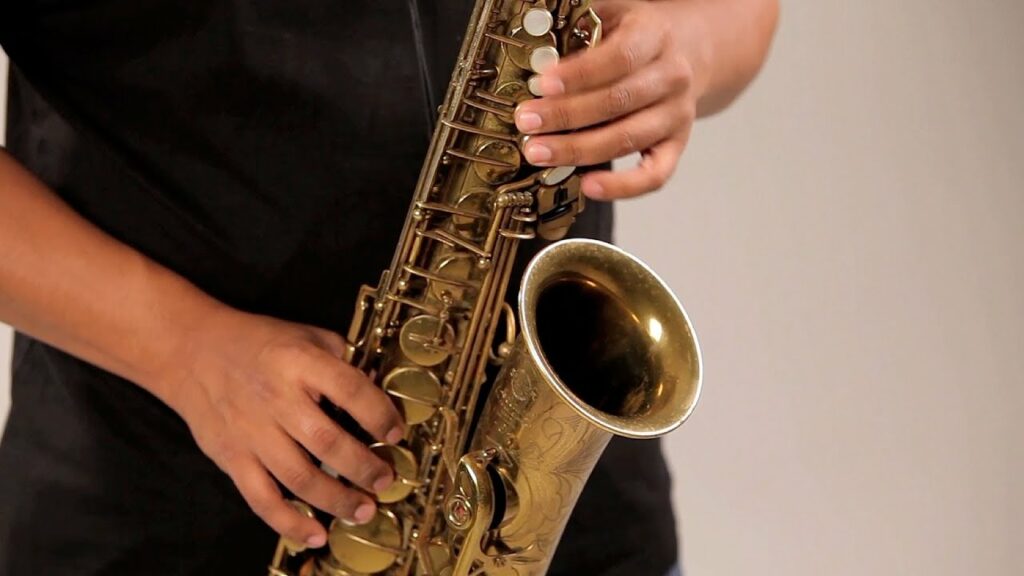
Adolphe’s patent expired in 1866. At that time, Millereau Company filed a patent for a saxophone that included a forked F# key. Goumas made changes to the saxophone fingering system, making it more like the Boehm fingering system for clarinet. Goumas received a patent for these changes in 1875.
In 1881 Adolphe Sax filed to extend his original patent. He changed the length of the bell and extended the range of the instrument by adding a 4th-octave key. The bell changes allowed the horn to play Bb and A, and the octave key gave the sax F# and G.
Gus Beuscher built his first sax in 1885. Beuscher was an instrument maker, the company still produces saxophones today.
In 1886, there were more changes. A half-hole system was developed for the first fingers of both hands. This allows for better intonation, and the use of alternative fingerings. The C trill key for the right hand was also added around this time.
The Association Des Ouvriers invented the saxophone tuning ring and created the predecessor to Evette and Shaeffer’s articulated G# in 1887. Rollers for low Eb and C were added in 1888. The multiple octave keys were replaced with a single octave key this year as well.
C.G Conn started mass producing saxophones in the 1890s. Since Conn was a well-respected and widely known brass instrument manufacturer, their involvement dramatically increased the acceptance and availability of the instruments. They started to see a wider influence in music at this time. C.G Conn is still producing brass instruments, and saxes today.
Adolphe Sax died from pneumonia in 1894. His son, Adolphe Edouard Sax took over the company, and the development of the instrument his father had developed. In 1928 The Henri Selmer Company bought the Adolphe Sax company.
The saxophone key layout we all know today resulted in several changes throughout the 1930s and 1940s. The new key layouts and changes in design resulted in a standardized horn with a more ergonomic layout. This made the saxophone easier to learn, easier to play, and easier on the hands. These changes helped contribute to the growing popularity of the instrument.
In 1954, the Selmer company introduced the Mark VI sax. This sax model was a huge success and was preferred by professional musicians all over the world. The Mark VI went out of production in 1975, but it’s still popular, and a highly sought-after horn today.
When did the saxophone become popular?

In 1844 a father and four sons with the last name of Distin met Adolphe Sax. They were traveling musicians who made their living playing slide trumpet, trombone, French horn, and keyed bugle. The Distins were impressed with the new brass and woodwind invention, and in 1846 they became the first seller of the saxophone in Britain.
The saxophone was a key component in the beginning of the British brass bands movement which started in the mid 19th Century. This movement began as a way to bring music to the working class of the British Isles. Brass instruments were more affordable than the typical woodwind instruments of the time. Because the saxophone could play in all registers, they were a perfect match for the growing brass band movement.
The growth of brass bands brought saxophones to military, church, and village bands. At the time, instruments made from brass were more affordable than wooden ones. That, combined with the range and versatility made saxophones a popular choice in the brass bands.
In the late 1920s, Marcel Mule formed a saxophone quartet. Like most sax quartets today, his was made up of soprano, alto, tenor, and, baritone sax. Mule transcribed, arranged, and commissioned music for his group. Eventually, Mule established a sax program at the Paris Conservatoire. This was the beginning of the sax being accepted as an instrument for serious classical music.
The saxophone came into popular use in the United States during the beginning of the Jazz era. It was first used by vaudeville performers because of its novelty.
Frankie Trumbauer played C melody sax
Sidney Bechet is known for his amazing vibrato on the soprano sax.
Coleman Hawkins made the tenor sax popular in the 1920s and 1930s
Swing era
Charlie Parker -bebop
John Coltrane -spiritual, modal jazz played a Mark VI
Ornette Colmen – free jazz
Stan Getz -Bossa Nova
Michael Brecker – fusion
The 1940s
Rhythm and blues
Louis Jordan
The 1970s and 1980s
Sax solos as an instrumental break between vocal verses was popularized by Earth Wind and Fire
John Coltrane released his album, My Favorite Things (Atlantic Records) on soprano sax in 1961. The title track became incredibly popular and played a vital role in building the popularity of the sax in music outside of jazz. This was the beginning of sax being used in eastern-inspired, meditative, and transcendental music.
Types of the Modern Saxophone
There are 8 types of saxophones still in use today.
Soprillo Saxophone
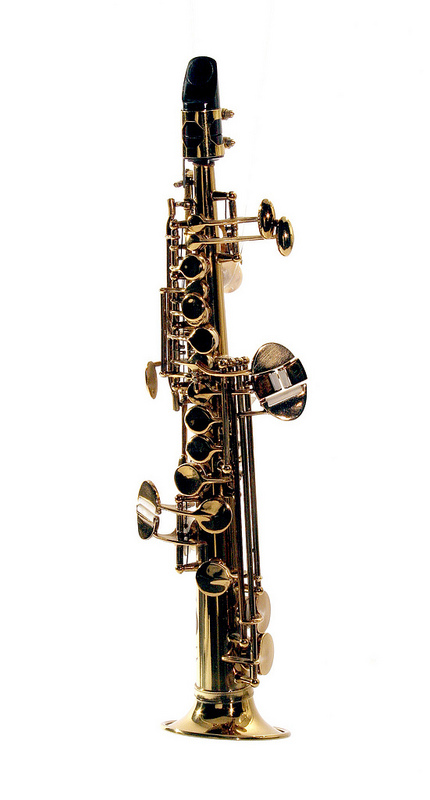
Soprillo saxophone is the smallest and highest sax in existence. It’s tuned to the key of Bb and plays one octave above the soprano sax. The sopapilla sax’s range is concert Ab4 to Db7. It’s also called the Bb piccolo sax.
The soprillo sax is different from other instruments in the saxophone family because it’s so small. This horn is only 13 inches long from the tip of the bell to the tip of the mouthpiece. The register key is part of the mouthpiece. The sax is small enough that the pearl buttons cover the tone holes almost entirely. It’s a very difficult instrument to play, and there are only a few professionals who play performances with a soprillo sax.
- Todd Groves
- Peter A. Schmid
- Nigel Wood
- Randolph D. Emericka
This is a specialty instrument, and not made by most big-name saxophone manufacturers.
Sopranino Saxophone
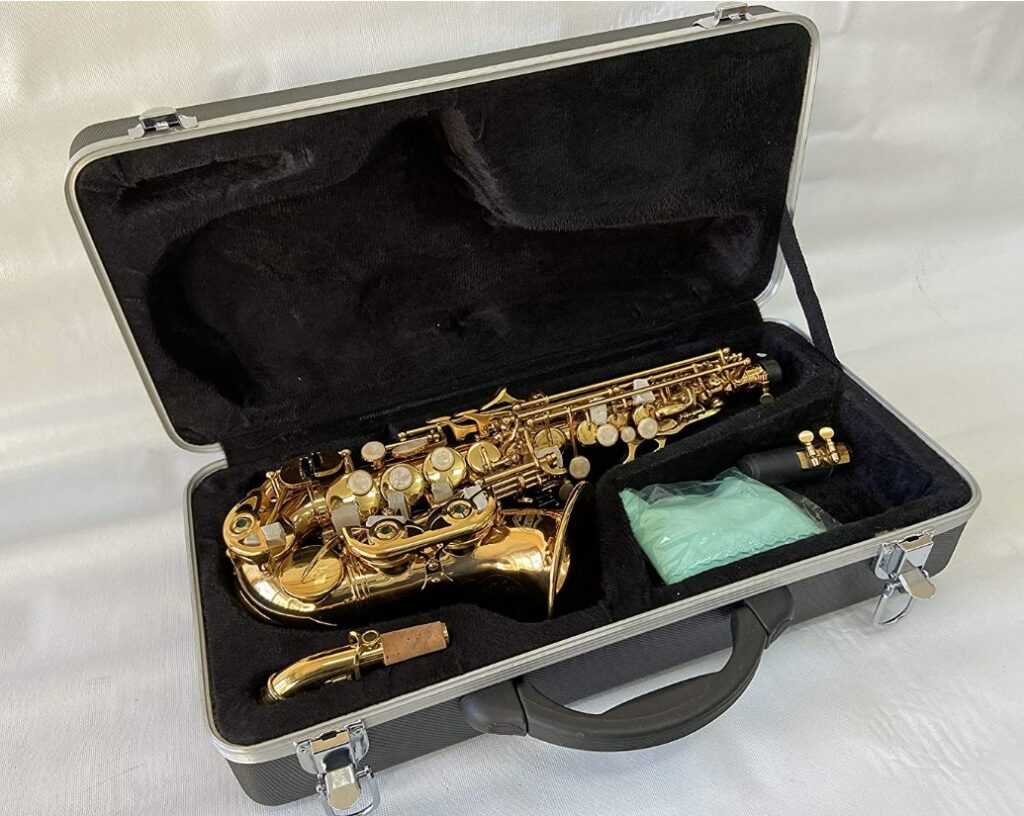
The sopranino saxophone is the second smallest of the popular modern saxes. It plays in the key of Eb. This model of sax is usually produced as a straight horn. It’s so small that there is no reason to curve the instrument. Some sax manufactures do produce a curved sopranino sax. They do this to keep the look of the sax in line with the more popular alto and tenor horns. Many people see the straight sopranino saxes and think they are golden clarinets.
The small size of the instrument combined with the tiny mouthpiece makes the sopranino one of the more difficult saxophones to play. Reeds for this instrument must be specially made. Sometimes Van Doren carries sopranino reeds. Many players use Eb clarinet reeds with great results. Good sopranino makers include Selmer, Yanagisawa, and Conn,
Sopranino saxes are used in happy, upbeat pieces.
Popular Sopranino Sax musicians include:
- David Hernando Vitores
- Joey Resendez
- Alistair Panel
- Jon Irabogon
- Wessell “Warmdaddy” Anderson
- Kenny Garret
- Farrell Vernon
- Matthieu Metzger
- Nigel Wood
- Alistair Parnell
- Attilio Berni
- Joelle Wallach
Soprano
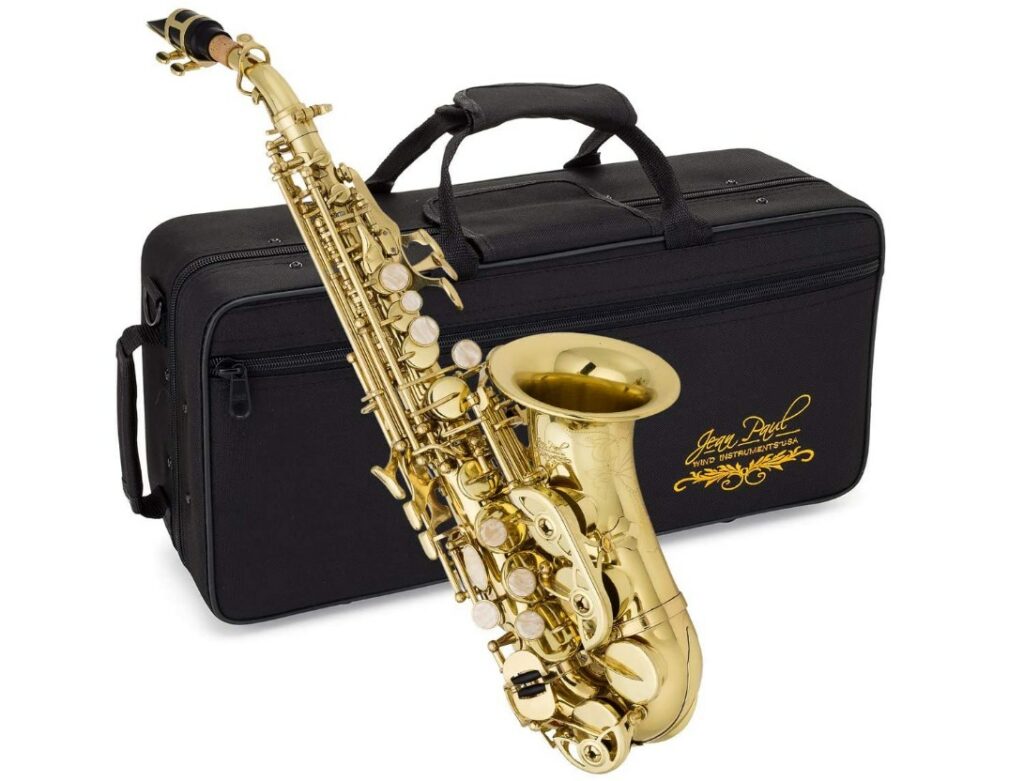
The soprano is the third smallest of the popular saxes. It’s also the third-highest in pitch. Like the sopranino, this horn is usually manufactured as a straight horn, although there are several popular models of curved soprano sax. The soprano is pitched in the key of Bb and was invented in 1840. Like the sopranino, the soprano sax is often mistaken for a golden clarinet.
Soprano sax is used in a wide variety of musical styles. Classical, jazz, blues, and even some modern music all use soprano sax.
There are quite a few well-known soprano sax payers.
- Kenny G is probably the most well-known.
- Sidney Bechet is considered to be the father of soprano sax in jazz.
- Johnny Hodges “Harmony in Harlem”
- Otto Hardwick
- Lucky Thompson plays a soprano sax rendition of “In a Sentimental Way” by Duke Ellington on the album Lucky Strikes
- Stephen Norman Lackritz, known as Steve Lacy, released an album called Soprano Sax in 1957.
- John Coltrane recorded My Favorite Things on soprano sax.
- Zoot Sims
- Jerome Richardson
- Wayne Shorter
- Jane Ira Bloom
- Pharoah Sanders
- Jan Garbarek
- Grover Washington Jr
- Bob Mintzer
- Jay Bechinstein
- Dave Koz
- Najee
Soprano sax reeds are available at most music stores. Like most reed instruments, the ideal reed depends on the player, but Van Doren are known for the quality of their sax reeds.
When buying a soprano sax look for sturdy keys that don’t bend easily, and a sax that plays in tune. Well-known soprano sax makers include Yamaha, Selmer, Conn, Yanagisawa, King and Buescher.
Alto Sax
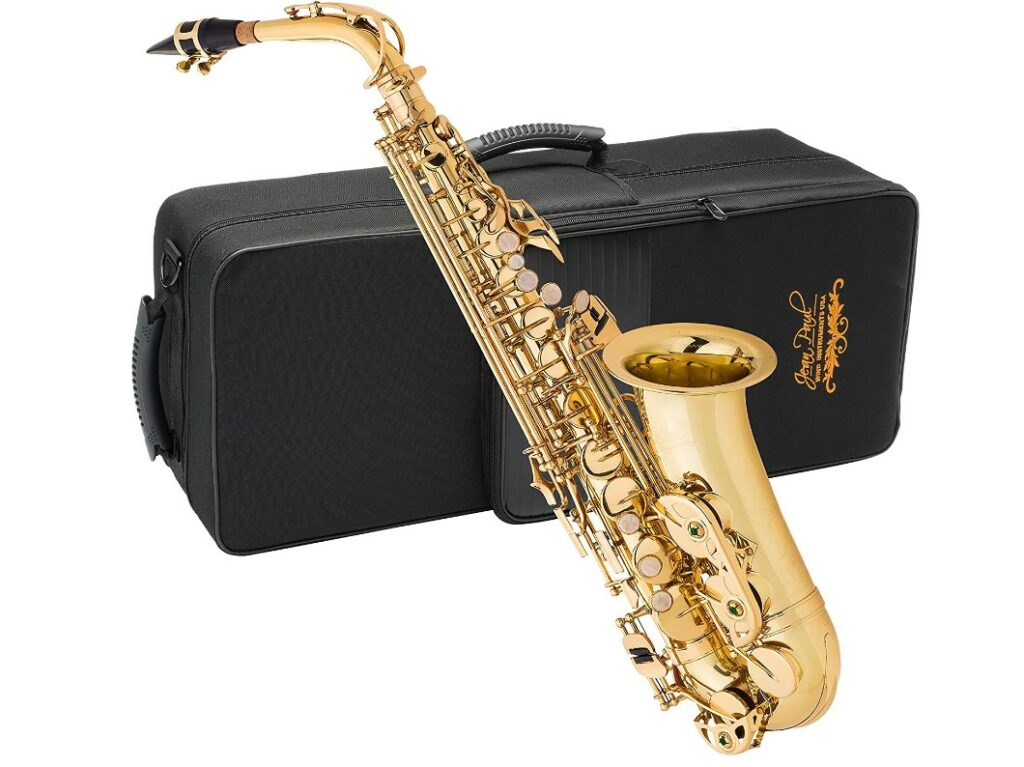
Alto Sax is the smallest of the commonly recognized saxophones. Most altos weigh between 4 and 6 pounds without the mouthpiece and are about 25 inches long. Alto sax is the perfect instrument for new saxophone players because it’s small enough to handle easily. The alto sax is pitched in the key of Eb. Its range starts at a low concert Bb and reaches to F# over 2 octaves higher.
The alto saxophone was key to the developing popularity of the sax. It played a major part in the growth and evolution of modern jazz. It’s not unfair to say that without the alto sax, jazz music as we know it today would be completely different. This sax is also an integral part of the concert, rock, funk, blues, and pop music genres.
Each of these well-known saxophonists played an integral role in moving the art of saxophone playing forward. They are masters of the horn and helped form jazz, rock, and blues music as we know it today.
- David Sanborn
- Jimmy Heath
- Charlie “Bird” Parker
- Charles Lloyd
- Lee Konitz
- Illinois Jacquet
- Paul Desmond
- Albert Ayler
- Earl Bostic
- Eric Dolphy
- Benny Carter
- Art Pepper
- Cannonball Adderly
- Gary Bartz
- Benny “Hank” Crawford
- Sonny Stitt
- Ornette Coleman
- Jackie McLean
- Johnny Hodges
Alto saxophone reeds are available from any music store. Popular brands include Rico Roya and Van Doren. There are quite a few alto saxophone manufacturers. When buying a musical instrument, it’s best to stick with known brands like Yamaha, Selmer, Conn, Yanagisawa, King, and Buescher. One of the most popular beginning alto saxophones on the market is the Yamaha YAS-23.
Tenor Sax
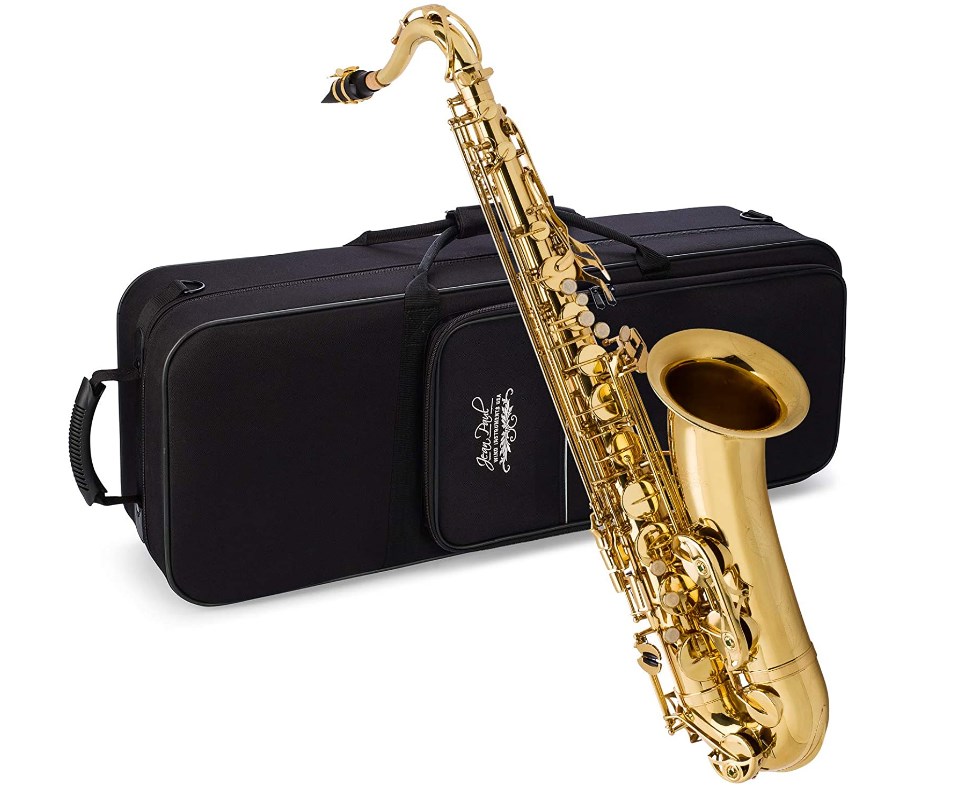
The tenor sax is the instrument that plays in the middle ranges of the human singing and speaking voice. This can sometimes give it an eerie quality. The tenor is pitched to the key of Bb and has a range from Ab2 to E6. Tenor sax is frequently used in rock, blues, jazz, and classical pieces.
- John Coltrane
- Ben Webster
- Joe Henderson
- Coleman Hawkins
- Lester Young
- Clarence Clemons
- Sonny Rollins
- Stan Getz
- Dexter Gordon
- Gato Barbieri
- Joe Lovano
- Rahsaan Roland Kirk
- John “Zoot” Sims
- Pharoah Sanders
- Johnny Griffin
- Gene “Jug” Ammons
- Sam Rivers
- Hank Mobley
- Wayne Shorter
- Michael Brecker
- Jan Garbarek
- Eddie “Lockjaw” Davis
Like alto sax, tenor sax reeds are available any music store. The most popular brands are Rico Royal and Van Doren. When buying a tenor saxophone you can’t go wrong with Yamaha, Conn, Selmer, and King.
Baritone Saxophone
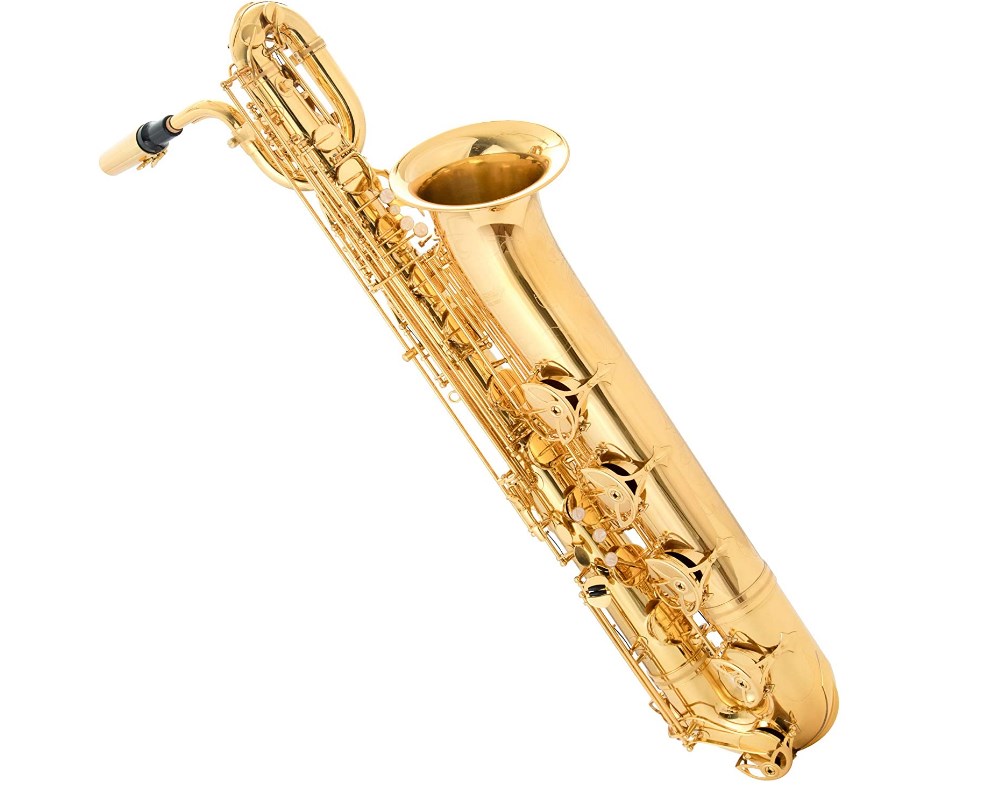
Baritone saxophone, also called bari sax, is the largest, heaviest, and lowest sounding of the commonly played, and instantly recognizable saxophones. In jazz music, bari sax is often responsible for the bass parts. This sax typically weighs between 11 and 20 pounds without the mouthpiece. The large span in weights is due to differences in materials, and structure. Some baritone saxophones have a low A key.
Bari sax was one of the original horns designed and created by Adolphe Sax. It’s pitched in Eb and has a range from Low Bb (some horns have an A key) to High A.
Bari sax is a popular instrument in jazz ensembles, as well as jazz and concert bands. Its beautiful low tones are also perfect for modern rock, avant-garde, and next-generation music.
These are some famous and influential baritone saxophone players:
- Harry Carney
- Pepper Adams
- Ronnie Cuber
- Charles Mingus
- Serge Chaloff
- Jason Marshall
- Mats Gustafsson
- Roger Rosenberg
- Ronnie Cuber
- John Surman
- Lars Gullin
- Leo Parker
- Hamlet Bluelett
- Gary Smulyan
- Cecil Payne
- Gerry Mulligan
- Jerome Richardson
- Colin Stetson
- Sahib Shihab
- Gerry Mulligan
- Brian Landrus
Keep in mind that many saxophonists play all four popular instruments, so there is likely a good bit of cross-over between the lists for soprano, alto, tenor, and baritone.
Not all communities have a bari sax player, so your local music store might have to order them.
Contrabass Saxophone
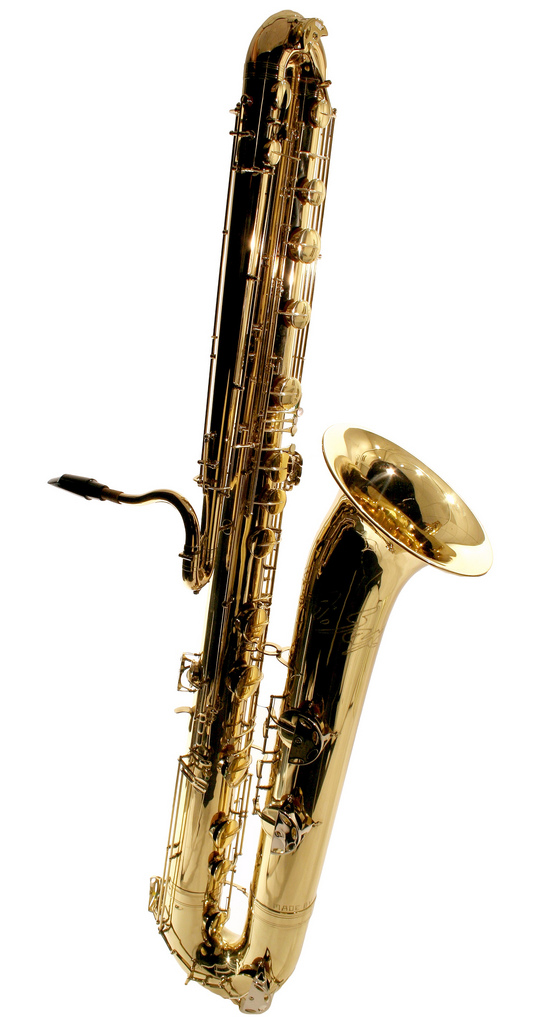
Contrabass Saxophone is the largest saxophone created by Adolphe Sax. It’s pitched in Eb and is a full octave below the baritone sax. The range of the contrabass is from concert C1 to A3.
This saxophone typically weighs at least 45 pounds. Because of the weight, most contrabass saxophones come with an adjustable peg stand, similar to a bass clarinet. This helps the musician support the weight and balance the instrument.
The Contrabass saxophone shares fingerings with all the other instruments in the saxophone family. It is an incredibly expensive instrument to make, which means it’s rare. There are a small number of contrabass saxophone players.
- Scott Robinson
- Anthony Braxton
- Randy Emerick
- Uwe Ladwig
- Jay C. Easton
- Paul Cohen
- Steffen Schorn
- Blaise Garza
Reeds for this instrument are available by special order. The contrabass saxophone isn’t made by the popular band instrument makers. At this time there are three contrabass saxophone makers in the world.
- Benedidkt Eppelsheim in Germany
- J’Elle Stainer in Brazil
- Romeo Orsi Wind Instruments in Italy
Bass Saxophone

Bass Saxophone is the lowest of the saxophone family used today. It’s also the first saxophone created by Adolphe Sax. The original bass sax was pitched in C, but modern ones are in the key of Bb. It’s never been a popular instrument, but the bass sax makes its presence known when it’s used.
There is an interesting story about the bass saxophone. It seems that Adolphe Sax walked 186 miles from Brussels to Paris for the Paris Industrial Exhibition. He carried that first bass saxophone the entire way. Despite the bass sax’s lack of use in popular music, several composers loved the instrument. Hector Berlioz said it was “magnificent and profound.”
In 1842 Escudier wrote, “You cannot imagine the beauty of the sound and quality of the notes.” It’s unclear if the author of this quote was Leon, or his brother Marie. The instrument was used in many 1920 jazz tunes. Today it’s used in saxophone choirs, free jazz, and some concert bands.
There are a few modern scores that were originally written to include bass saxophone:
- West Side Story by Leonard Berstein
- Music Man, written by Meredith Willson
- The Boy Friend, composed by Sandy Wilson
Percy Grainger and Warren Benson have included the bass saxophone in their compositions for the concert band.
There aren’t as many bass saxophone experts as there are specialists in the more popular saxophones, but here are a few.
- Otto Hardwick
- Spencer Clark
- Randy Emerick
- Marc Bresdin
- Anne Voigt
- Joe Rushton
- Min Leibrook
- Joe Rushton
- Adrian Rollini
- Andy Kirk
- Spencer W. Clark
- Andreas Kaling
- Joe Garland
- Vinny Golia
- Brian Hills
- Steffen Schorn
Bass saxophone reeds are a special order item. You can get them through Van Doren and Legere. Wurlitzer, Selmer, Conn, and Benedidkt Eppelsheim are among the companies who make bass saxophones.
FAQs
• Soprano
• Alto
• Tenor
• Baritone
Answer: Tenor sax is the most commonly used saxophone.
Answer: Of the four most common saxes, the soprano sax is the most difficult to play because the sax is so small. It takes work and practice to learn to play correctly on the small mouthpiece
Answer: Alto sax is the easiest to learn and play. All the saxes have used similar techniques and fingerings. The alto sax is easiest to learn because of its size and weight. Tenor and bari sax is heavy and bulky. The size and weight make them more difficult, especially for beginning players.
Answer: The answer depends on what style of music you want to play, and your experience level. Every professional saxophonist has their preferred brand of sax. Many even prefer different brands for different types of sax. In general, the best sax brand is Yamaha.
Selmer, Conn, King, and Yanagisawa are also good brands for beginners and pros alike.
Answer: Most saxophones are traditionally made from a metal alloy called brass, Brass is a mixture of copper and zinc. It’s used for instrument making because it is a light metal with good resonance. Brass also doesn’t trust easily. Today, some people have experimented with making saxophones from plastic. A few people have even successfully used 3D printing technology to create working saxophones that sound a lot like brass instruments. There might come a time when most saxophones are 3D printed, but right now the majority of new instruments are made from brass using traditional methods.
Answer: Adolphe Sax was sued over patents several times. When Sax’s original patent expired, several instrument makers applied for patents of the changes they’d made to Adolphe’s saxophone. A few years later Adolphe Sax renewed his original patent with changes. This prompted some instrument makers to sue for patent infringement or to have Adolphe’s patent ruled illegitimate. The bottom line is that Adolphe’s competition was trying to have his patents revoked. In the end, Adolphe Sax won, and his patents were ruled perfectly legal.
Conclusion
The modern saxophone has a rich and documented history. Unlike most musical instruments, it can easily be traced back to the original creator, Adolphe Sax. There are 14 different types of saxophone, although only 4 are regularly used today. The soprano, alto, tenor, and baritone saxophones add a unique blend of brass and woodwind sound to music in all genres.
